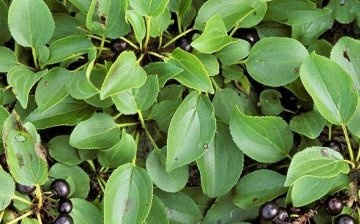Joster laxative: application and cultivation
A shrub or small tree called joster laxative or otherwise buckthorn laxative is of primary interest in terms of its medicinal properties. As a medicinal plant, joster (its various parts) is used in the treatment of constipation, gout, rheumatism, indigestion, chronic skin rashes. And this is not a complete list.
It is not often looked at as an ornamental plant. The use of these unpretentious shade-tolerant shrubs for landscaping is most often limited to masking ugly places, such as planting in wastelands or in small meadows in the forest. It also happens that the joster laxative is used to create dense, sturdy hedges that tolerate pruning and are easy to form. But such a hedge is not a place near the fields, since the buckthorn is the intermediate host of the rust fungus.
The buckthorn is best suited for those areas where forest vegetation has been preserved. Shady corners of the garden and patios are for her too. This plant is completely unpretentious to the soil. Due to the length of its roots, two or even three times the length of the aboveground part, it will grow even on the most scanty soils. Only in this case, its growth will be somewhat slower. Still, drained, moist, cold soils are preferable.
If you grow buckthorn on the site, then it is necessary to produce its formative, sanitary and decorative pruning. In general, if there is a laxative joster cultivation, then it does not seem difficult.



